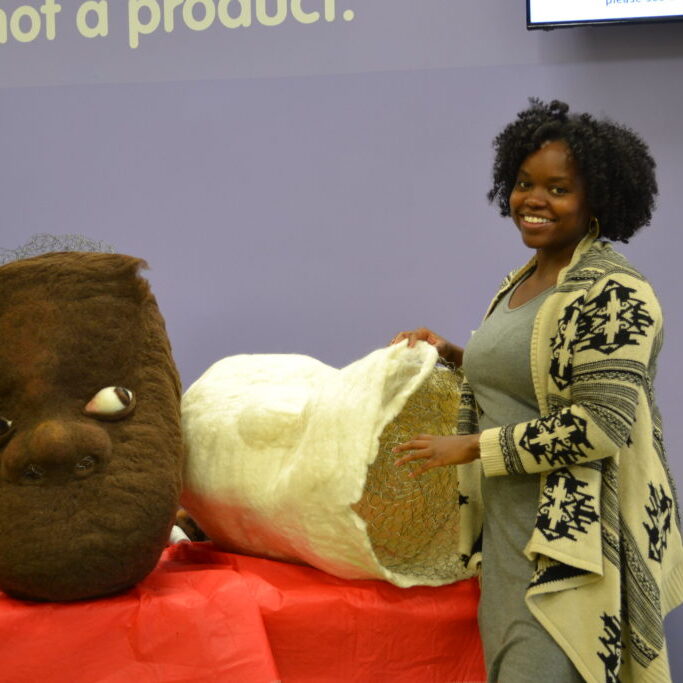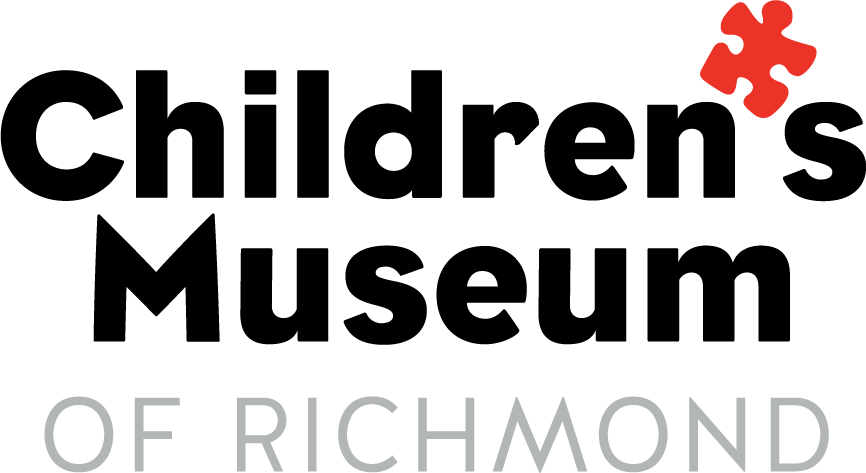Art is in Play: Creative in Residence at the Children’s Museum
The Children’s Museum has built a reputation for engaging experiences that foster creativity in both children and their caregivers. Now, they’re doing so in a way that hasn’t been seen at the Museum in a generation, with the launch of a new Creative in Residence program with artist Nastassja Swift. Encouraging a better understanding of…
Published on November 12, 2019


The Children’s Museum has built a reputation for engaging experiences that foster creativity in both children and their caregivers. Now, they’re doing so in a way that hasn’t been seen at the Museum in a generation, with the launch of a new Creative in Residence program with artist Nastassja Swift.
Encouraging a better understanding of the many benefits of play is a part of the mission of the Children’s Museum, where these benefits are explored and uncovered every day at each of their four locations — Downtown, Chesterfield, Short Pump and Fredericksburg.
Through play, children are able to enhance both their physical and their mental development in healthy and productive ways. As they say at the Children’s Museum, when children play ahead, they get ahead.
“Creativity is a crucial element of a child’s playtime activities,” says the Children’s Museum president and CEO, Shannon L. Venable.
“Art and creativity help to develop a child’s brain — increasing the ability to learn and encourage acceptance of different perspectives,” she explains.
In fact, in a recent survey of over 1,500 CEOs from 33 industries worldwide, creativity was said to be the skill most necessary for successfully navigating our increasingly complex world.
That’s one reason that, in addition to the many other exhibits and activities, each of the four Children’s Museum locations is equipped with kid-friendly art studios.
And it’s also a reason that the Children’s Museum has recently welcomed visual artist Nastassja Swift to Richmond as the “Creative in Residence,” coinciding with CultureWorks’ ArtoberVA and lasting through the unveiling of her permanent installation on November 16. In addition, Swift will also make multiple weekday and weekend visits to each of the four area Children’s Museum locations, for hands-on workshops and demonstrations.
“The Creative in Residence is an opportunity to enhance early learning and introduce families to creative and cultural arts, along with providing the unique experience of seeing an artist such as Swift actually create in the moment,” confirms President and CEO Venable. “Observing Swift will allow children and caregivers to witness firsthand artwork’s endless possibilities,” she adds.
Swift’s residence is the first to be hosted by the Children’s Museum in nearly 20 years. The goal of the program is to encourage creativity in young children and by extension their families, by allowing them the opportunity to observe, learn and create alongside Swift in open studio sessions. Museum guests will be able to observe Swift as she makes progress on a one-of-a-kind art installation at the Children’s Museum downtown, which will be unveiled at the completion of her residency on November 16.
However, the program is much more than simply watching. Like most everything at the Children’s Museum, having a Creative in Residence will be a very hands-on experience. Using the very same wet and dry wool felting techniques employed by Swift, guests will learn about the artistic process, while contributing to the creation of a collaborative picture book. In addition, guests can create art of their own, making a felted wool keychain to take home.
“Swift is not only an artist that is able to spark creativity in children — she is a storyteller and craftsperson,” states Cameron Booth, the Children’s Museum Art Studio Coordinator and Creative In Residence project lead. “Her main medium, wool, is a material that has been used across the world for centuries. Children and adults alike will learn of its importance in art making but also its use in cultural traditions and daily commodities. This will help make deeper connections between Nastassja’s art and how it saturates into everyday life.”
Creative activities like this help to connect a child’s mental activity with the actions of their hands and fingers, further promoting their abilities to discover new possibilities by physically interacting with and manipulating their playtime materials.
Swift herself is no stranger to Richmond, having received her Bachelor of Fine Arts at Virginia Commonwealth University, with a major in painting & printmaking and a minor in craft & material studies. Since that time, Swift’s striking masks and dolls have been displayed as far away as the Wa Na Wari Art Space in Seattle and The Colored Girls Museum in Philadelphia. Her website, www.nastassjaswift.com, describes her artwork as “reflective of childhood, girlhood and identity through the vessel of her felted figures.”
If having an artist working and creating among the exhibits is a little unexpected, that’s quite alright with the Children’s Museum. “Thinking outside the box is in our organization’s DNA,” Venable explained, “and the presence of a reputed artist like Nastassja Swift furthers our goal toward continued excellence in providing broadening experiences to one of our community’s greatest resources: children.”
